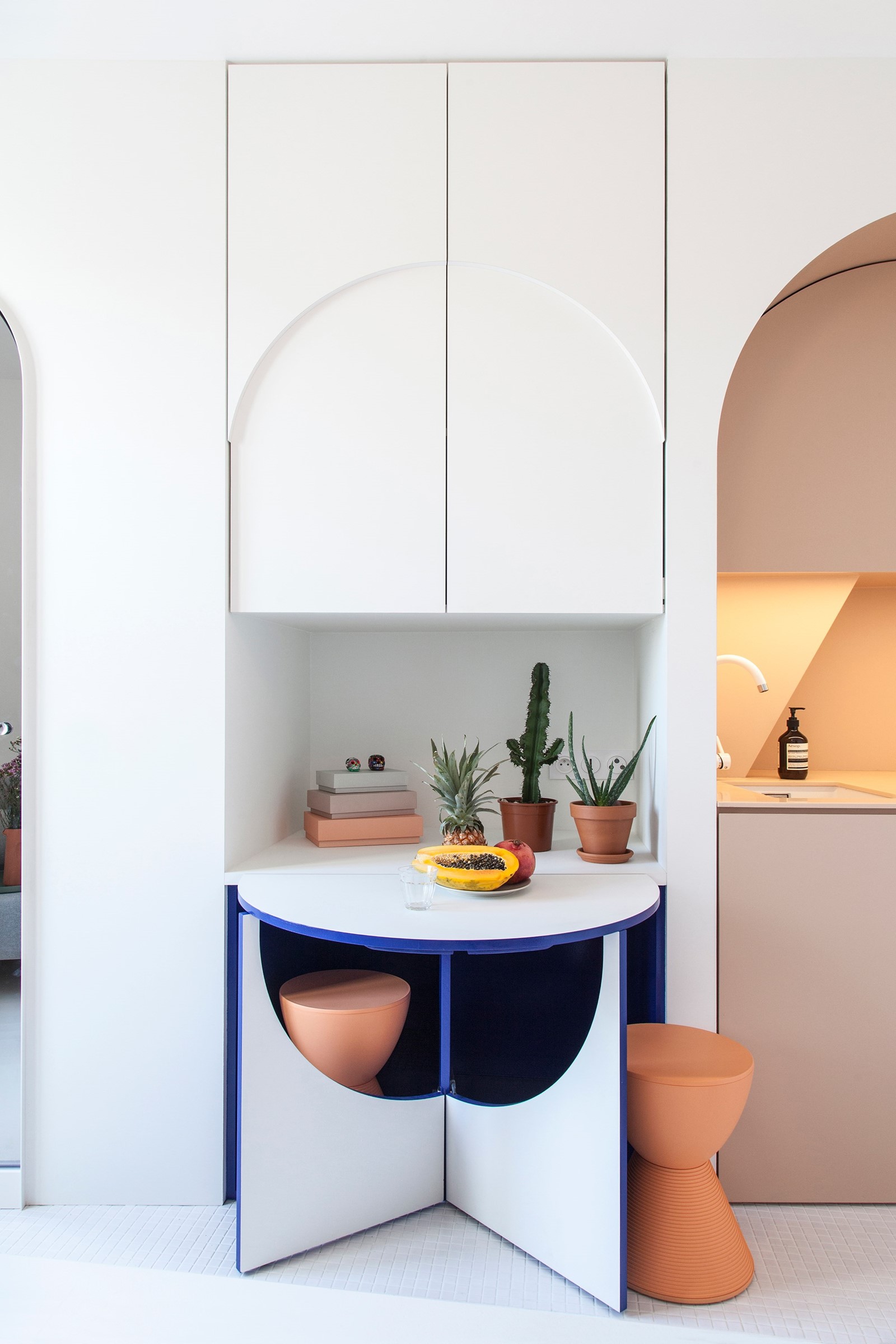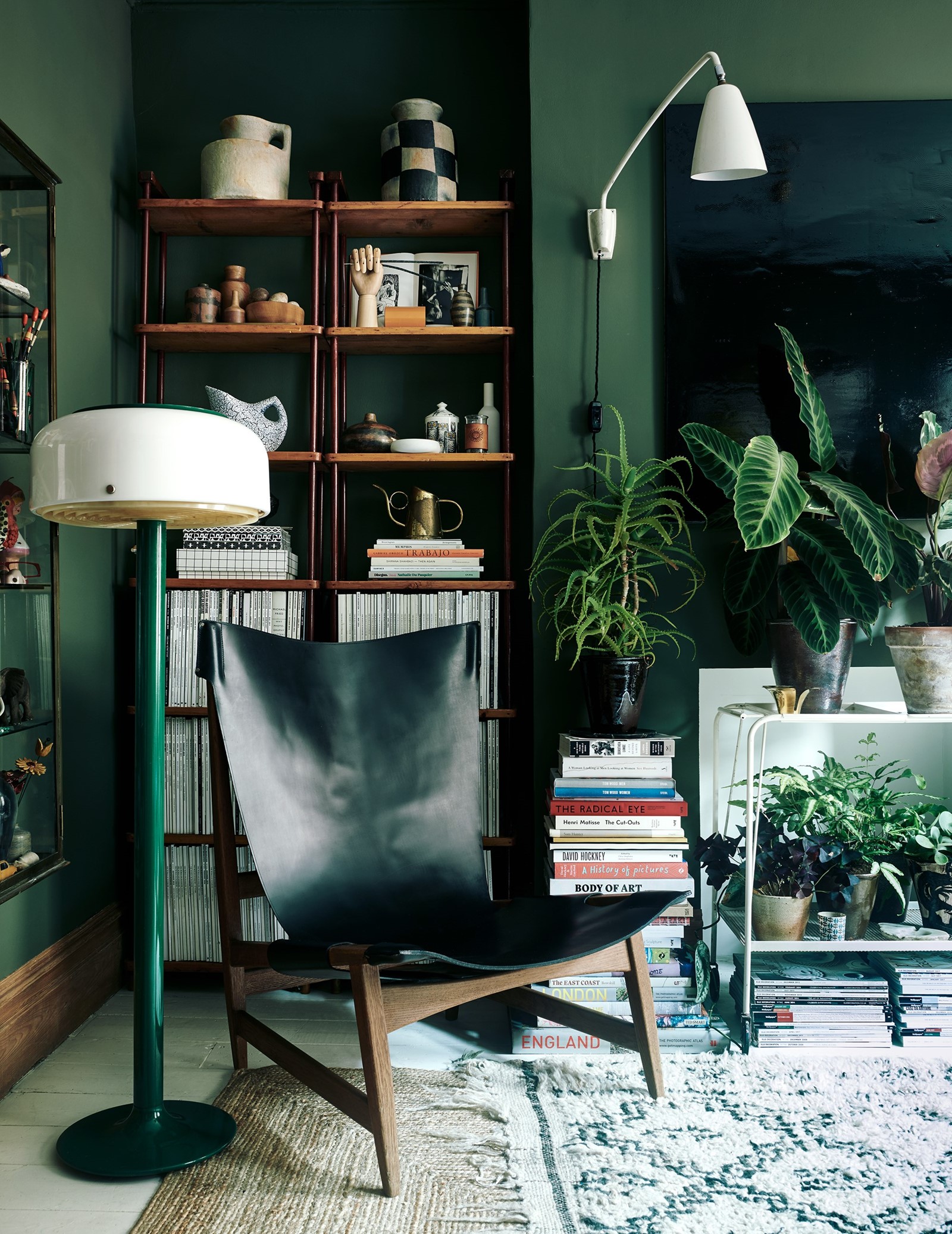“Home is something of our own, our private sphere and protection, a place where we can shut the door behind us,” says Prof. Dr. Klaus Klemp in a new essay penned for Gestalten’s latest ode to interiors, Petite Places. In the same breath, Klemp introduces Israeli-French artist Absalon, whose affection for the comfort of home was forcibly fused with his love of travel, resulting in a legacy that positions him as the most radical advocate for the miniature home. Born in the city of Ashod in December 1964, Absalon – whose real name was Meir Eshel – was brought up and educated in Israel and later served as an aircraft technician at the Hatzerim Israeli Air Force Base. Despite his natural intelligence and specialised education, Absalon was discharged from the from the army in what he described in an interview as a “very bad state”. Apparently convinced a life of solitude was the appropriate treatment for his psychological discomfort, the 20-year-old artist built his first home (a wooden cabin) in Sinai, Egypt, where he made a living producing jewellery. Unable to harness the liberation he desired, Absalon relocated to Paris in 1987, taking his curious obsession with solo habitation along for the ride. He began studying at at the École Nationale Supérieure d’Arts Paris-Cergy and by 1990 he was represented by Galerie Chantal Crousel. Only months later he met curator Yona Fischer, having been introduced by Christian Boltanski, and was invited to exhibit at the Aika Brown Gallery, Jerusalem. This was the first time he had returned to Israel in all the time he had lived in Paris.
Soon moving again, this time to Boulogne’s Villa Lipchitz – built by architectural icon Le Corbusier – Absalon had set his sights on existing in geographical limbo, wishing to split his time between Paris, Zurich, New York, Tel Aviv, Frankfurt am Main and Tokyo. Motivated by his dream, the artist designed a series of six living pods called Cellules, intended to accommodate just one person. They would each require only a few square metres of space and he planned to build and utilise these homes in 1993. Sadly, on 10 October that year, Absalon died of AIDS aged only 28, and his vision was never realised. What he did manage to leave behind were his models and a hypothesis for living that continues to influence architects and idealists almost three decades later, the principles of which are celebrated in Petite Places.

While moulded for modernity by Absalon, the concept of small abode-dwelling is as old as time itself. His Cellules were just one moment of evolution in a long history of miniature homes. As explained by Klemp, there were the small caves and huts of our ancient ancestors, the tipis and bush houses of the Native Americans, the igloos of the Inuits, the yurts of shepherd nomads, the woven Berber tents in north Africa, and the dwellings of hermits. As a society, we tend to judge those who wish to exist in solitude as outsiders, misfits or reluctant citizens. We assume their motivations and condemn them based on a misplaced belief that they should learn to co-exist. In reality, human beings have lived in isolation for reasons of safety and protection. “The first known town, Çatalhöyük, emerged in Anatolia during the Neolithic period, around 7,500 years BC, or in the Mesopotamian region within the Tigris-Euphrates river system,” explains Klemp. “Here, you would enter the house over the roof and pull the ladder up behind you to keep out unwanted visitors.”

In the sprawling canyon of time between Çatalhöyük and Absalon, the philosophies of existence, community and self have been relentlessly challenged by architects, psychologists and politicians alike. For a post-war Europe, economics and painstakingly choreographed ideologies defined developments in housing. In 1929, Dutch architect Mart Stam wrote, “The right dimensions are the dimensions that are sufficient with the minimum of effort. The measure of our objects should therefore be a human measure. Representation is not a human measure, it is excess, it is wanting to impress, it is wanting to appear to be more than the truth.” According to Klemp, the 1920s and early 1930s were witness to this grand experiment of new living. Citing Friedrich Nietzsche, Rudolf Steiner, and the Lebensreform movement demanded as the catalysts for this dramatic change, he writes, “It needed to become a reality for all people: the free man, healthy in body and soul, socially minded and democratic, function-oriented, self-determined, and cosmopolitan.”
In 2018 the conversation surrounding designed living and its parameters has expanded to encompass all aspects of life. Work, play and nourishment (both psychological and physical) have combined and the hierarchies of our needs manipulated to suit the increasingly flexible cultures we aspire to exist within. What is never lost is our craving for beauty. Even in the most functional spaces, pleasure is derived from clean lines and the minimalism of eradicated excess. Petite Places celebrates the diversity of our ability to survive, showcasing the ingenuity and innovation we can employ when challenged to express our practicality and restraint without sacrificing our identity.
Petite Places is out now published by Gestalten.






